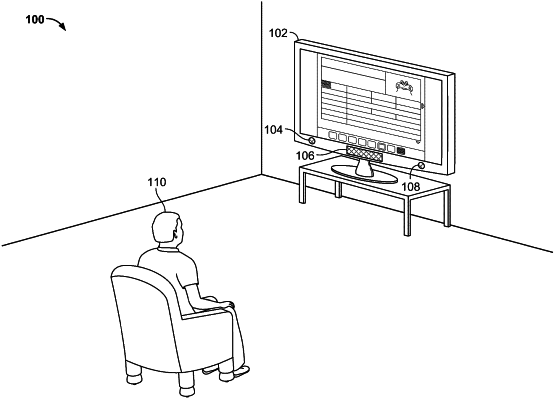| CPC G10L 15/22 (2013.01) [G10L 21/0316 (2013.01); H04R 1/326 (2013.01); G10L 2015/223 (2013.01)] | 20 Claims |

|
1. A method for distinguishing valid voice commands from false voice commands in an interactive media guidance application, comprising:
receiving, via a first unidirectional microphone of a user device, a first input including a signature sound sequence at a first time, wherein the signature sound sequence has a frequency outside audible frequency for humans;
receiving, via a second unidirectional microphone of the user device, a second input including the signature sound sequence at the first time;
determining a first reference gain based on an average of a first gain of the first input and a second gain of the second input;
normalizing the first gain based on the first reference gain;
normalizing the second gain based on the first reference gain;
determining a metric for a current location of the user device based on a difference between the normalized first gain and the normalized second gain;
receiving, at the user device, a voice command;
determining, using the control circuitry, based on the voice command, a gain for the voice command;
determining whether the gain for the voice command is different from the metric; and
in response to determining that the gain for the voice command is different from the metric, executing the voice command.
|
|
11. A system for distinguishing valid voice commands from false voice commands in an interactive media guidance application, comprising:
communications circuitry configured to:
receive, via a first unidirectional microphone, a first input including a signature sound sequence at a first time, wherein the signature sound sequence has a frequency outside audible frequency for humans;
receive, via a second unidirectional microphone, a second input including the signature sound sequence at the first time;
receive a voice command; and
control circuitry configured to:
determine a first reference gain based on an average of a first gain of the first input and a second gain of the second input;
normalize the first gain based on the first reference gain;
normalize the second gain based on the first reference gain;
determine a metric based on a difference between the normalized first gain and the normalized second gain;
determine, using the control circuitry, based on the voice command, a gain for the voice command;
determine whether the gain for the voice command is different from the metric; and
in response to determining that the gain for the voice command is different from the metric, execute the voice command.
|